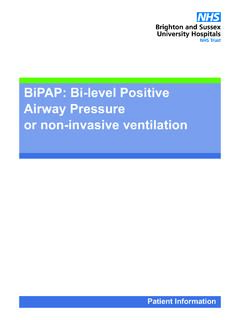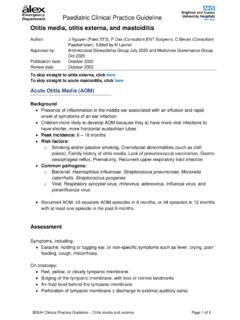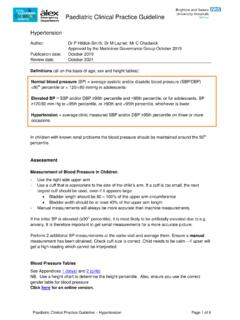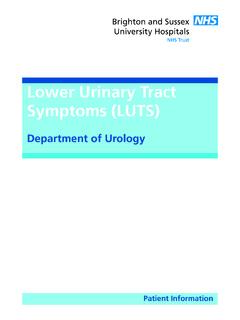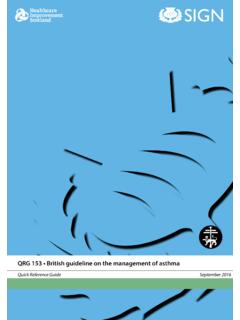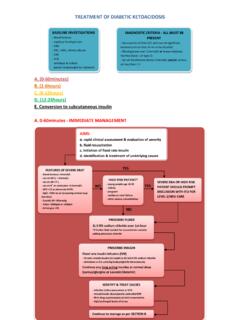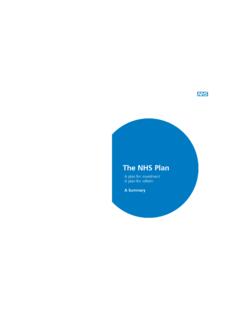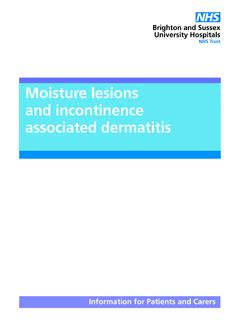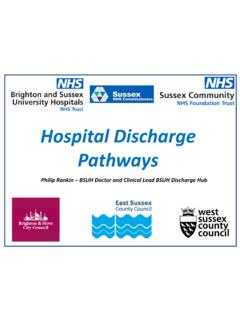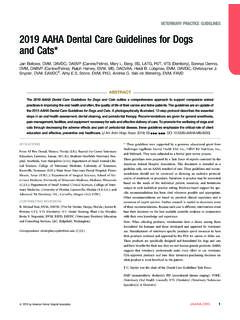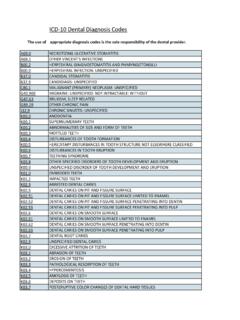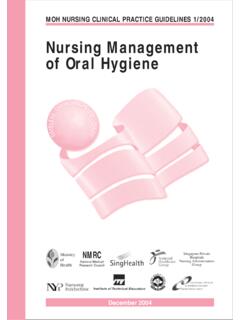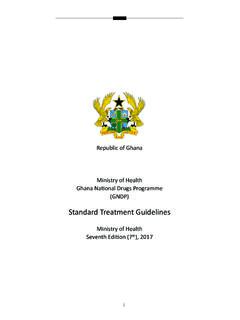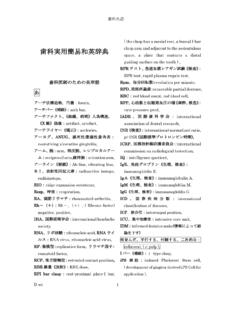Transcription of Eating Disorders - MARSIPAN assessment and Pathways …
1 Paediatric Clinical Practice Guideline Eating Disorders BSUH Clinical Practice Guideline Eating Disorders Page 1 of 23 Eating Disorders - MARSIPAN assessment and Pathways for RACH Authors: Dr Leonie Perera (Paediatric Consultant), Dr Lucy Allsop (Consultant Psychiatrist), Katie Clark, Rochelle Blackburn (Dieticians), Lorraine Tinker (Head of Nursing), Laura Wright (RMN), Nathan Haddick (RMN) (Paediatric Mental Health Liaison Team), Dr Jonathan Rabbs (Consultant Paediatrician FEDS). Version: 4 - Updated from 2016 Publication date: Sep 2019 (updated version) Review date: Sept 2020 Section title Page Background, referral to FEDS, referring to RACH for admission 1 CED assessment 3 CED management 5 CED Who to admit + drug chart + what to say 6 WARD Admission, monitoring and calories increases 7 WARD Trouble shooting- Electrolytes, cardiac, agitation 9 WARD Discharge criteria from RACH 11 CONTACT DETAILS 12 APPENDIX 1 Junior MARSIPAN Risk assessment 13 Calculating % Median BMI (Weight for Height) 14 Blood Pressure Centile Charts (UK Children) 15 Sit Up-Squat-Stand Test (SUSS) Test 17 NURSING INFORMATION Managing Meal Times TO PRINT 18 refusal of dietary intake, compliance, legislation 20 Meal plans 21 DIAGNOSIS (DSM-V)
2 Anorexia Nervosa (AN) 1. Marked restriction of calorific intake with Calculated % Median BMI < 85 % 2. Intense fear of gaining weight, despite being underweight 3. Disturbance in the way in which one's body weight, size or shape is experienced, undue influence of body shape and weight on self-evaluation. Bulimia Frequent (once a week or more) episodes of binge Eating , followed by self- induced purging behaviour, in order to avoid weight gain. Most children in Sussex will be under the Pan-Sussex Eating Disorder Team (FEDS). However some children will be under CAMHS due to pre-existing or additional comorbidities. Some children may have started with FEDS and been admitted to Chalkhill before transferring to RACH.
3 Paediatric Clinical Practice Guideline Eating Disorders BSUH Clinical Practice Guideline Eating Disorders Page 2 of 23 Differential Diagnosis Any child presenting with rapid/considerable weight loss you should consider Eating disorder GI: Inflammatory bowel disease, malabsorption, coeliac disease Malignancy, Chronic infection Endocrine causes: diabetes, hyperthyroidism, hypopituitarism, Addison s CNS disease including SOL Other psychiatric Disorders : depression, OCD/anxiety 1. NEW DIAGNOSIS SUSPECTED? a young person seen in CED or outpatients - If after an initial assessment (using this document to guide you), refer to FEDS - hyperlink to FEDS referral form - CED patients: Discuss with Paediatric Mental Health Liaison Team (PMHLT) #2414 or bleep 8913 2.
4 IF FEDS or Chalkhill/CAMHS team refer to RACH for admission - Please contact RACH beforehand : 1. Bleep COW on 8636 to inform of plan to admit and to know bed state etc. 2. Bleep CED Consultant on 8641 to inform that sending child to CED and ask for their email to send referral letter and individual care plan. Try to avoid Friday admissions, advance planning FEDS/CAMHS to send i) referral letter ii) completed Individual Care Plan (ICP) see Appendix Last few weights and weight for height The name of lead practitioner Whether admitting for instability or RFS risk (or both) Details of amount of bed rest to be completed on ICP Details of recent food intake Details of previous MHA or current MHA paperwork Paediatric Clinical Practice Guideline Eating Disorders BSUH Clinical Practice Guideline Eating Disorders Page 3 of 23 assessment IN CED 1.
5 HISTORY: It is essential to get an idea of weight loss trajectory for risk assessment . You MUST ask about current/recent intake and features in bold below Rapid weight loss from overweight to normal weight can result in medical instability (patients already under FEDS team don t need all the questions below asked)- Weight Diet Exercise How much would you like to weigh? How do you feel about your current weight? How frequently do you weigh yourself? What s the most you can remember weighing? When did you start to lose weight? How have you tried to control your weight? Restriction What s your intake like at the moment? Run me through what you had to eat Yesterday? And the last 5 days What sort of things do you avoid?
6 Bingeing Do you ever binge on food? If so how often? What do you binge on? How much of that would you eat? Purging Sometimes when young people are trying to control their weight they use medicines or other methods to get rid of food, either by making themselves vomit or by going to the toilet a lot. Have you ever tried this? If so frequency, amount. Have you ever tried any diet pills or water tablets to help you lose weight? How often do you exercise each week? For how long? What exercise do you do? How do you feel about exercising? Menstrual history age at menarche regularity of cycles last normal monthly period Review of systems Dizziness, blackouts, weakness, fatigue Pallor, easy bruising/bleeding Cold intolerance Hair loss/dry skin Vomiting, diarrhoea, constipation Fullness, bloating, abdominal pain, epigastric burning Muscle cramps, joint pains, palpitations, chest pain Symptoms of hyperthyroidism, diabetes, malignancy, infection, inflammatory bowel disease Symptoms of depression, anxiety, OCD, self-harm NEW SUSPECTED CASES.
7 Think about other causes of weight loss/change in appetite (lymphadenopathy, oral ulcers, rectal blood, abdo mass, coeliac features, hepatosplenomegaly, features of intracranial lesion, social issues or low mood) Paediatric Clinical Practice Guideline Eating Disorders BSUH Clinical Practice Guideline Eating Disorders Page 4 of 23 2. Examination record info on Junior MARSIPAN Risk assessment (APPENDIX 1). Look at the referral letter from FEDS- this contains essential information about previous weight. Look for sunken cheeks & eyes, sallow dry skin and a flat affect. They often have cool peripheries and lanugo hair (fine downy hair over the trunk) and are bradycardic. CALCULATE: Patients with severe anorexia have a BMI < centile.
8 You must quantify the degree of underweight by using %BMI, which is better known as Weight for Height (WfH). 1. Measure Weight and Height and plot on centile chart 2. Calculate BMI (weight (kg) height 2 (m) 3. Then calculate the % Median BMI using APPENDIX 2 or use an instant WfH app: : %Median BMI (WfH) = actual BMI X 100 50th centile BMI 4. HR, BP (lying/standing) - look at centile. BP centiles see APPENDIX. 5. Peripheries and CRT, assess % dehydration. Mitral valve murmur ? 6. ECG + manual calculation of QTc- use tangent method below (to avoid over-diagnosis) and look at T waves 7. Temp (hypothermia is worrying) 8. SUSS test (See APPENDIX ) and deep tendon reflexes (diminished implies electrolyte problem) 9.)
9 Oral/GI system: gingivitis , dental caries, loss of enamel, swollen parotid glands, RUQ tenderness. 10. Confusion /delirium? 3. Investigations To some extent investigation will depend on the need to exclude other diagnoses. Urinalysis ( if amenorrhoeic patients) urine pregnancy test BLDS in CED: IV Cannula + FBC, U&E, Bone profile, Vitamin D levels, TFTs, LFTs, Mg, CK, glucose (amylase if abdo pain), coeliac screen, Blood gas - inflammatory markers and faecal calprotectin (for new suspected cases) Confusion/delirium/acute pancreatitis/acute abdomen and tachycardia (latter indicates imminent cardiovascular collapse) NEED URGENT ATTENTION Paediatric Clinical Practice Guideline Eating Disorders BSUH Clinical Practice Guideline Eating Disorders Page 5 of 23 CED MANAGEMENT Manage as an Out-patient- If low risk + known to FEDS agrees to meal plan- ensure FEDS f/up date in place.
10 If low risk and not known to FEDS make FEDS referral you may need to discuss with Paediatric Mental Health Liaison Team ext. 2414 or bleep 8913. Contact the GP with discharge plan (Symphony discharge letter) within 24 hours Who/Why to admit? A) Risk of refeeding syndrome (RFS) (see in-patient management for more info) B) Medically unstable physiological parameters C) Younger children (presentation more complex, higher risk, plus no Chalkhill beds < 12yrs) Many YP admitted to actual Eating disorder units have poor long term outcomes- with increased learnt and secretive behaviours, collusion between patients, and development of Resistant anorexia. Admission to a paediatric ward can remind YP and families just how serious their disease has become and offer a chance at nutritional resuscitation (we know that just by increasing calorie intake, this can itself change the YP s abnormal thinking and anorectic behaviour).
